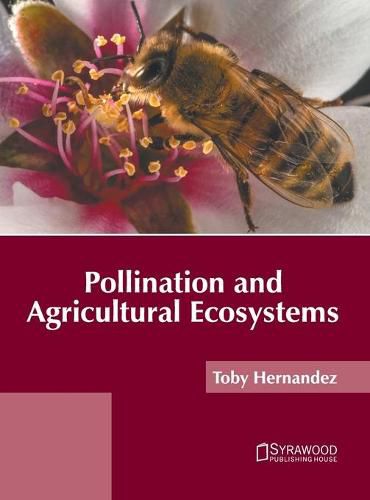Readings Newsletter
Become a Readings Member to make your shopping experience even easier.
Sign in or sign up for free!
You’re not far away from qualifying for FREE standard shipping within Australia
You’ve qualified for FREE standard shipping within Australia
The cart is loading…






Pollination is the process by which pollen is transferred from the male part of a plant to the female part. This enables fertilization and the production of seeds. Usually, pollination occurs within a species, but in cases where it occurs between two different species, a hybrid offspring is produced. Self-pollination occurs when pollen from the same plant reaches the stigma of a flower or ovule. Pollination is often aided by animals such as birds, insects and bats as well as by the wind, rain and water. Nearly 3/4th of world’s supply of food is derived from plants that require pollination. The financial and ecological advantage of natural pollination by native pollinators in the case of agricultural crops can be witnessed in their improved quality and yield. However, there is a recent decline in pollinator populations owing to habitat destruction, pesticide use, climate change and parasitism or disease. Pollination management is thus vital to modern agriculture. Efforts to protect and enhance pollinators, and add new pollinators to monoculture situations, as in commercial fruit orchards, are important for better agricultural productivity. This book elucidates the concepts and innovative models around prospective developments with respect to utilizing pollination for improving the health of agricultural ecosystems. It consists of contributions made by international experts on pollination and pollinating agents. It will help new researchers by foregrounding their knowledge in this area.
$9.00 standard shipping within Australia
FREE standard shipping within Australia for orders over $100.00
Express & International shipping calculated at checkout
Pollination is the process by which pollen is transferred from the male part of a plant to the female part. This enables fertilization and the production of seeds. Usually, pollination occurs within a species, but in cases where it occurs between two different species, a hybrid offspring is produced. Self-pollination occurs when pollen from the same plant reaches the stigma of a flower or ovule. Pollination is often aided by animals such as birds, insects and bats as well as by the wind, rain and water. Nearly 3/4th of world’s supply of food is derived from plants that require pollination. The financial and ecological advantage of natural pollination by native pollinators in the case of agricultural crops can be witnessed in their improved quality and yield. However, there is a recent decline in pollinator populations owing to habitat destruction, pesticide use, climate change and parasitism or disease. Pollination management is thus vital to modern agriculture. Efforts to protect and enhance pollinators, and add new pollinators to monoculture situations, as in commercial fruit orchards, are important for better agricultural productivity. This book elucidates the concepts and innovative models around prospective developments with respect to utilizing pollination for improving the health of agricultural ecosystems. It consists of contributions made by international experts on pollination and pollinating agents. It will help new researchers by foregrounding their knowledge in this area.